Search
Remove Ads
Advertisement
Summary 
Loading AI-generated summary based on World History Encyclopedia articles ...
Search Results
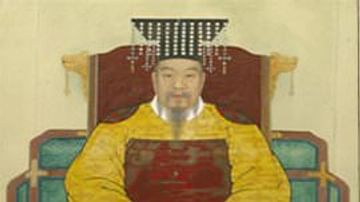
Definition
Taejo of Goryeo
Taejo (r. 918-943 CE), previously known as Wang Geon or Wang Kon, was the founder and first king of the Goryeo (Koryo) kingdom which unified and ruled ancient Korea from 918 CE to 1392 CE. Wang Geon was given the posthumous title of Taejo...
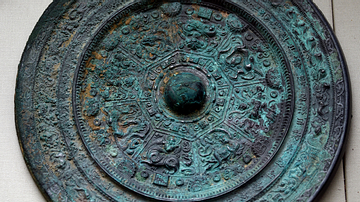
Image
Mirror Decorated with Figures of Xi Wang Mu and Dong Wang Gong
This bronze mirror is decorated with figures of Xi Wang Mu, the Queen Mother of the West, and her consort, Dong Wang Gong, as well as animals of the four directions and other creatures. Inscribed around the edge is a poem proclaiming prosperity...
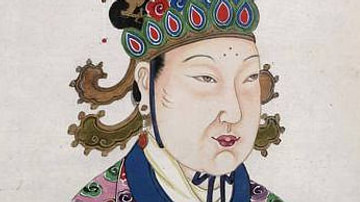
Definition
Wu Zetian
Empress Wu Zetian (Empress Consort Wu, Wu Hou, Wu Mei Niang, Mei-Niang, and Wu Zhao, l. 624-705 CE, r. 690-704 CE) was the only female emperor of Imperial China. She reigned during the Tang Dynasty (618-907 CE) and was one of the most effective...
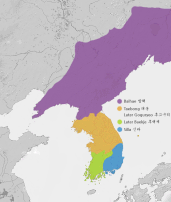
Definition
Later Three Kingdoms Period
The Later Three Kingdoms period (889-935 CE) of ancient Korea saw a partial revival of the old three kingdoms which had dominated the peninsula from the 1st century BCE to the 7th century CE. After the Unified Silla kingdom had ruled Korea...
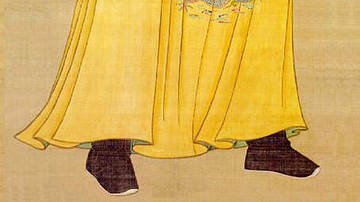
Definition
Emperor Taizong of Tang
Taizong (birth name, Li-Shimin, l. 598-649 CE, r. 626-649 CE) was the second emperor of the Tang Dynasty and is considered one of the greatest rulers in Chinese history for his reforms of the government and the laws, his religious tolerance...

Image
Taejo of Goryeo (Wang Geon)
A portrait of the founder of the Goryeo kingdom of Korea, Taejo, formerly known as Wang Geon (r. 918-943 CE).
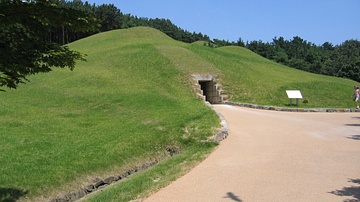
Image
Tomb of Muryeong-Wang
The mound tomb of Baekje king Muryeong-Wang (r. 501-523 CE) which, within its huge earth mound, has a semi-circular vault lined with hundreds of moulded bricks, many decorated with lotus flower and geometric designs. The structure, located...
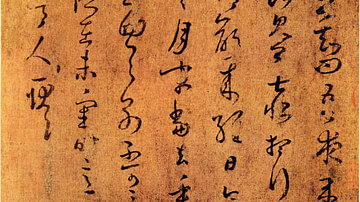
Image
Calligraphy by Wang Xizhi
A portion of copied calligraphy originally by the famed Chinese calligrapher Wang Xizhi (c. 303 - c. 365 CE). Tang dynasty period.
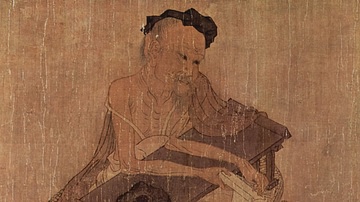
Image
Fu Sheng by Wang Wei
An 8th century CE portrait of the 3rd-2nd century BCE Confucian scholar Fu Sheng by the famed Tang dynasty portrait painter and poet Wang Wei (699-759 CE). (Osaka City Museum of Fine Arts, Japan)
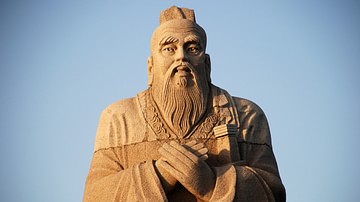
Article
Similarities Between Eastern & Western Philosophy
Although there are certainly differences between Eastern and Western philosophical systems, they both aim at the same goal of apprehending Truth and understanding the best way to live one's life. Modern-day scholarship often makes a serious...